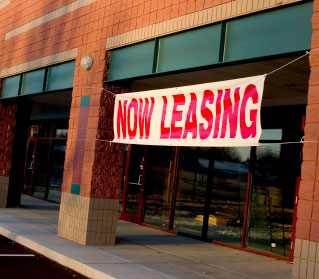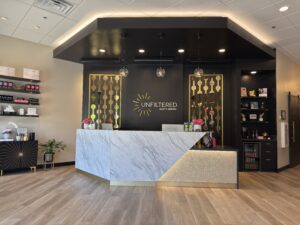A Tenant Improvement (TI) allowance, sometimes referred to as construction allowance, is money provided by the landlord to be used exclusively for the basic interior construction of the space being leased.
The TI allowance is a way to help cover the expense of your office construction for things that will stay behind when your lease is up, i.e. those things that are attached permanently to the space, such as walls, light fixtures, bathroom fixtures, etc. TI allowance is typically converted to a cost per square foot. This allows the landlord to quickly adjust and determine what the allowance amount will be based on the square footage of the space being leased.
1. How much TI allowance can I expect to receive?
TI allowances can range from $0 to $150 per square foot.
The TI allowance is typically based on the actual cost of construction required to get a space to a state that it can be occupied or “move-in ready”. For example, in the case of an unfinished space – where TI allowance is the most common – it is based on the calculations for “standard build-out” to construct wall partitions, basic electrical wiring, basic ceiling and lighting, and standard carpeting/flooring.
In the case of a space that has previously been occupied, there may be no TI Allowance offered at all, because the landlord has already put money into the space and he/she considers the space move-in ready.
2. Why does TI allowance vary so much?
The cost per square foot of a TI allowance can vary dramatically depending on multiple factors.
A few of the most common factors are:
- The length of the lease. Longer leases typically afford higher allowances.
- The current condition of the space. If the space is move-in ready the allowance will typically be low. If space is still unfinished the allowance can be significantly higher.
- The degree of motivation that the landlord has to lease the space. This is typically due to supply and demand caused by either high vacancy or few vacancies.
- The degree to which the landlord desires to secure the prospect tenant and/or type of practice in their development.
- The type of building or development. A building with a high finish level and appearance will typically increase the allowance amount to be sure new tenant’s spaces complement the building quality level and serves as a means to attract high profile tenants.
3. What isn’t covered by a TI allowance?
A “standard build-out” to a landlord is based on providing a “standard office space”. Typically, the calculations for previously unfinished space would cover 3-4 offices build out in a 1000 square foot space. The calculations do not include any upgrades or enhancements, such as plumbing beyond code required basic restroom(s), lighting beyond basic lay-in fluorescent, and more than the standard walls and doors. This means that it does not include millwork – or built in cabinetry, accent lighting, coffee bar and/or utility sinks, showers, etc. It does not mean that you cannot have these things in your space; it just means that “standard build-out calculation” does not typically include them. A well designed space can often “spread” the allowance to maximize its impact.
Design/Engineering consultation and construction documents as well as permits and such fees are typically outside of TI allowance calculation. Note that it can be negotiated that these fees can be part of the allowance, and this is often the case when the landlord has in-house construction services.
Equipment and furnishing are typically not included in the calculations nor can they be paid for out of the TI allowance.
4. How are TI allowances paid?
Remember that most landlords require their approval on all designs for initial build out or renovation before your construction can begin, since they will own your build-out. Landlords generally elect one of the following options for your build-out:
In House: The landlord may elect to handle the construction build-out “in-house” using a contractor they have used in the past. In this case, the TI Allowance money never changes hands with you as the tenant. When this is the case, we typically find the construction is a profit center for the landlord and the costs could be inflated, thus the allowance might not go as far as it would otherwise. As the tenant, you don’t have to pay the money upfront and then get reimbursed in this situation.
Your Designer and Contractor: The second common options is that the landlord allows the tenant to secure their own design and construction team. In this case, the monies would be paid out by the tenant and then the landlord will reimburse when all work is complete and approved. If this is not handled properly and invoiced quickly, there can be a lag time that impacts your start-up cash flow. We suggest trying to negotiate with the Landlord and Contractor prior to the lease being signed so the monies can be dispersed at key completion points of construction.
If your construction does not require the full allowance, you will not be given the remaining allowance in cash. Use it or lose it.
5. How does TI Allowance impact my Lease Negotiations?
TI allowances can be used as a point of reference for the landlord and prospective tenants to come to terms. The more you understand what you require in your Chiropractic office design and your finances, the more you know where you have “give and take”. This knowledge will help you—along with your broker—achieve the most favorable results in your tenant space negotiations.
6. How CrossFields Can Help
Understanding the ins and outs of the TI Allowance can greatly impact your chiropractic office design, your start-up capital and your monthly overhead. A well-planned layout of space will save you money and as well as make you money over time. Our team specializes in Chiropractic space planning and can advise you how to negotiate to have the unique features of your space covered under TI Allowance.






